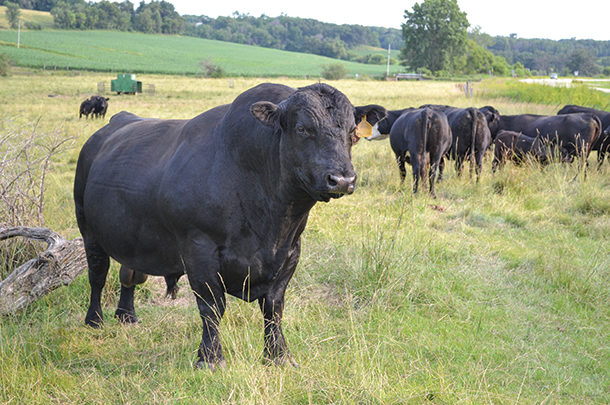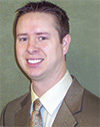Numbers, from body condition score (BCS) to semen motility, play a big role in breeding and ultimately add up to success or failure.
Consider these key figures when looking at cows, bulls and heifers:
Cows
For cows, key figures include:
-
85 days to rebreed. Having cows rebred 85 days post-calving keeps them in a 365-day calving cycle, setting them up to be in the cow herd longer and return more profit over their lifetime when producing a calf per cow per year.
-
60-day calving window. Cows calving during a 60-day window creates a more uniform and more valuable calf crop that’s easier to market. It also reduces the days of labor checking the cow herd during calving season.
- BCS of 6. To achieve the figures above, cows should be kept at a BCS of 6, and nutrition plays a significant factor in achieving ideal body condition. Research from the University of Nebraska shows 98% of cows at BCS 6 exhibit estrus by day 40 of the breeding season, compared to 80% for BCS 5 cows. Confirmed pregnancies for cows in BCS 6 were 90% compared to cows in BCS 5 at just 65%. A single-point BCS can make a big difference.
We focus a lot on the mature cow herd, and rightfully so. However, there are other members of the breeding herd who have their own numbers to keep in mind.
Bulls
Bulls are the hardest working animals in the pasture during breeding season and should be treated as such.
The first figure to focus on with bulls? BCS. Like cows, bulls should enter breeding season at a BCS of 6. That score helps ensure they are still well-muscled and athletic enough to get the job done season start to season end.
Bulls typically lose 10%-15% of their weight (one to two BCS points) during the breeding season. A bull at BCS 5 heading into breeding will likely drop to a 4 before the season ends. Data from Canada’s Western College of Veterinary Medicine shows that bulls at BCS 4 have reduced semen quality. Bulls in a BCS 6 can lose some condition while they are covering the cow herd, and it won’t impact their semen quality like it will under-conditioned bulls.
Over-conditioned bulls can be problematic, too. Bulls on the fatter side (BCS 7-9) can become lethargic, lowering their libido.
A few other figures come into play with breeding soundness exams (BSEs). BSEs should be part of your breeding program to ensure bulls are ready to breed before turnout.
For future breeding success, the Society for Theriogenology recommends the following key figures to pass a BSE:
- 34-centimeter scrotal circumference. For 15-month-old bulls, circumference must be a minimum of 30 centimeters and should increase by 1 centimeter every three months until a bull reaches 24 months old. The minimum circumference for a bull 24 months or older to pass a BSE is 34 centimeters.
- 30% semen motility. Semen motility, or how well the sperm moves, must be 30% or better to pass a BSE, but normal sperm cells are 70% motile or better.
- 70% morphologically normal sperm The other semen measurement looks at morphology, the amount of normal versus abnormal sperm. A passing exam has at least 70% morphologically normal sperm.
Replacement heifers
There are several different numbers cattle producers have used to determine when heifers are ready to breed, but one of the easiest to implement is mature bodyweight percentage.
Research on mature bodyweight percentage varies from 50%-65%. A good rule of thumb is to shoot for a minimum of 60% of mature bodyweight, since heifers at 55% might not have enough condition depending on the weather and forage situation at breeding.
Breeding heifers 30 days earlier than the mature cow herd can also help set them up for long-term success. Starting the breeding season sooner allows heifers more time to recover after first calving. The uterus has more time to repair post-calving, giving replacement heifers a better chance to stay in the cow herd. Once a cow’s second calf is on the ground, she tends to be a little more resilient in terms of reproduction.
Like cows and bulls, heifers should be at a BCS of 6 at breeding to help them maintain condition and breed back in a timely manner.
Nutrition’s role
You can’t have fertile cattle without a good nutrition program, plain and simple. Nutrition is the backbone of health, reproduction and all economically relevant traits in the breeding herd. Cutting corners on mineral, protein and energy supplementation is a gamble on your breeding program, which is often a losing bet.
If you aren’t already, consider forage testing to accurately determine nutritional gaps that could cause a BCS drop. Depending on your forage quantity and quality, consider additional protein and energy supplementation to maintain BCS.
Make minerals available to the entire cattle herd year-round to help maximize forage. Having the right blend of minerals out for your cattle will also benefit the fertility of your herd.
Establish a network of people you trust. Veterinarians, extension specialists and nutritionists can help identify areas of improvement in your breeding and nutrition program. ![]()
PHOTO: Bulls working hard in the pasture tend to lose 10%-15% of their bodyweight during a breeding season, making nutrition an important factor for reproductive success. Photo courtesy of Purina Animal Nutrition.

-
Patrick Gunn
- Beef Technical Sales Consultant
- Purina Animal Nutrition








